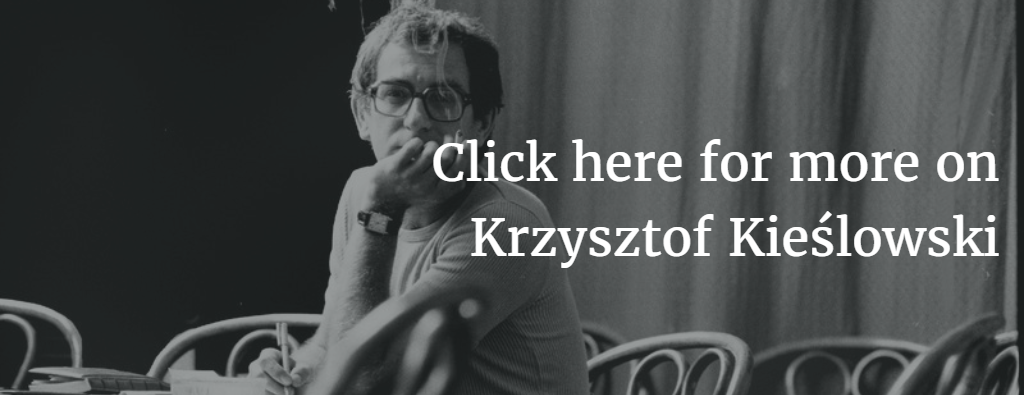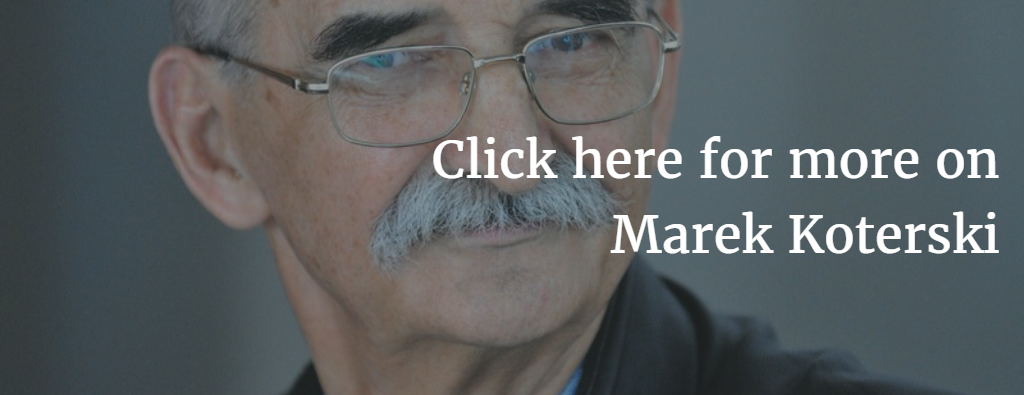6 Must-Know Directors from the Łódź Film School
The rebirth of cinema in Poland after World War II is inextricably linked to the Łódź Film School, an oasis of progress and artistic freedom amid the stifling culture controls of the communist regime. Here are six of the Łódź Film School’s famous alumni.
Andrzej Wajda
 Portion of original. Original credit: Andrzej Wajda, photo: Łukasz Ostalski / Reporter / East News
Portion of original. Original credit: Andrzej Wajda, photo: Łukasz Ostalski / Reporter / East News
Andrzej Wajda is one of the world’s most renowned filmmakers. His impressive resume boasts over 50 documentary and feature films, and a long list of awards and honours including an Academy Award for Lifetime Achievement.
Wajda’s career spanned over significant historical events and eras, both for Poland and for Polish film. He graduated from the Polish National Film, Television and Theatre School in Łódź in 1953 with a major in Directing, and within the next 5 years he released Generation, Canal, and Ashes and Diamonds, three films that initiated a new current called 'the Polish Film School.’ It tells the stories of heroes from both during and after the war and challenges the national tradition of martyrdom and romantic heroism in art.
Later on, his adaptations of Polish literature (The Promised Land, 1975), commentary on Polish life under communism (The Maids of Wilko, 1979 and Man of Iron, 1981), and tackling of the horrific Katyń massacre (Katyń, 2007) earned him four Academy Award nominations.
Krzysztof Kieślowski
 Portion of original. Original credit: Krzysztof Kieślowski, photo: Wojciech Druszcz / Reporter / East News
Portion of original. Original credit: Krzysztof Kieślowski, photo: Wojciech Druszcz / Reporter / East News
Krzysztof Kieślowski gained worldwide renown for the Decalogue series, The Double Life of Veronique and Three Colors: Blue, Red and White. A filmmaker of unparalleled merit whose simple stories deal with difficult, fundamental and universal questions about complex human feelings. In an interview, Kieślowski said, 'Everyone wants to change the world whenever they make the effort to do something. I don't think I ever believed the world could be changed in the literal sense of the phrase. I thought the world could be described.’
Kieślowski graduated from the Łódż Film School in 1968 with a love for documentary films. In the years 1966-80, he produced more than a dozen documentary films most of which explored social, economic and political realities in the Polish People's Republic. While he abandoned the genre for the freedom of feature film, his attention to visual aesthetics and observation can be derived from his experience as a documentary filmmaker.
Roman Polański
 Portion of original. Original credit: Roman Polański on the set of 'The Tenant', 1976, photo: Mary Evans Picture Library / Forum
Portion of original. Original credit: Roman Polański on the set of 'The Tenant', 1976, photo: Mary Evans Picture Library / Forum
Roman Polański is the most recognisable Polish director by English speaking audiences and is among the most decorated, and most controversial. He joined the Film School in Łódż in 1954. While there, his first student-film exercises already demonstrated the bedrock of Polański’s style, as well as the themes which are reiterated in his future films through the following decades.
Polański’s oeuvre is suspended somewhere between the absurd and the serious. It oscillates between a faith in the power of cinematic convention and an untamed imagination. Mariola Dopartowa, author of the monograph The Labyrinth of Polański, remarked on how Polański addresses existential issues, all the while mocking, provoking and irritating.
Polański first generated acclaim with his feature film, Knife in the Water. In the late 1960s, he relocated to Hollywood, where he would become famous as the director of The Fearless Vampire Killers (1967), Rosemary’s Baby (1968) and Chinatown (1974). His 2002 historical drama The Pianist netted Polański numerous awards, including the Oscar for Best Director.
Andrzej Munk
 Portion of original. Original credit: Andrzej Munk, photo: Lucjan Fogiel / East News
Portion of original. Original credit: Andrzej Munk, photo: Lucjan Fogiel / East News
Andrzej Munk's youth fell under the time of Nazi occupation. He took part in the armed resistance movement, later took on various jobs, working as a labourer and a technician. He graduated from the Łódż Film School in 1951 and from 1957 until his death he was a lecturer at the Łódź Film School. He was killed in a car crash in 1961, leaving the film Pasażerka (Passenger) unfinished. Since 1965, the Łódź film School has granted an annual Andrzej Munk Award for the best directing debut.
Munk’s personal experiences influenced the feel and depth of his works. He started his career as a documentary director filming propaganda productions about workers performing daily tasks but eventually wanted to pass on his own message. Munk claimed that his films were ’a response to the official tone of the documentaries of the time, to their laconic, over-optimistic tone. I tried to show issues that had been made banal, I wanted to show the hardship, sacrifice, heroism, the beauty of everyday work.’ His two most famous films, Eroica and Bad Luck, were prime examples of the Polish Film School trend but were not traditional stories of heroism. Film critic Ewelina Nurczyńska-Fidelska wrote,
Making Eroica and Bad Luck Munk stood next to those who play the role of 'mockers' in processes of shaping national and cultural awareness. Their scorn and mockery fulfils a cleansing function, though, aimed at rejecting mythologised values and developing new ones.
Krzysztof Zanussi
 Portion of original. Original credit: Krzysztof Zanussi, Photo: Wojciech Olszanka / East News
Portion of original. Original credit: Krzysztof Zanussi, Photo: Wojciech Olszanka / East News
Krzysztof Zanussi films cannot be considered along any clearly defined track or trend in Polish or international filmmaking. As a director, he is not subject to others' tastes or styles. He is a philosophical director, examining the perennial problem of love, death, happiness and conscience, looking at how they manifest themselves in the world today.
The quintessential hero of Zanussi's films is a man faced with a choice between values and the temptation of their rejection. The hallmark characteristic is moral sensitivity expressed in the compromise between the sphere of dreams regarding individual freedom and a life practice restricting this freedom. This character appears in several of Zanussi’s films including Family Life, Behind the Wall, Illumination, Camouflage and Spiral.
Zanussi graduated from the Łódż Film School in 1966.
Marek Koterski
 Portion of original. Original credit: Marek Koterski, photo: Łukasz Szeląg / Reporter / East News
Portion of original. Original credit: Marek Koterski, photo: Łukasz Szeląg / Reporter / East News
Marek Koterski came to Film School in Łódż relatively late in life after his early career as a theatre scholar. Having started out as an assistant director and a documentary filmmaker, it was not until Marek Koterski made his feature films that he touched on what was the most important to him - family trauma and personal problems. He debuted as a feature film director at the age of 42 in 1984 with his film The House of Fools about a devastatingly toxic family situation.
An interesting aspect of Koterski’s films is that they all have the same main character, a man named Miauczyński. Never trying to improve reality, Miauczyński is completely immersed in his world of neuroses, fears and frustrations. A run down intellectual, trying to get by on a meagre salary, he lives in a block of flats alone or with his ex-wife, and reads poetry to school kids. Through the life of his hero, Koterski explores and attempts to exorcise the demons that eat at him: an unhappy childhood, a failed marriage, his unrequited first love, obsessive ambitions and addictions.
[{"nid":"5688","uuid":"6aa9e079-0240-4dcb-9929-0d1cf55e03a5","type":"article","langcode":"en","field_event_date":"","title":"Challenges for Polish Prose in the Nineties","field_introduction":"Content: Depict the world, oneself and the form | The Mimetic Challenge: seeking the truth, destroying and creating myths | Seeking the Truth about the World | Destruction of the Heroic Emigrant Myth | Destruction of the Polish Patriot Myth | Destruction of the Flawless Democracy Myth | Creation of Myths | Biographical challenge | Challenges of genre | Summary\r\n","field_summary":"Content: Depict the world, oneself and the form | The Mimetic Challenge: seeking the truth, destroying and creating myths | Seeking the Truth about the World | Destruction of the Heroic Emigrant Myth | Destruction of the Polish Patriot Myth | Destruction of the Flawless Democracy Myth | Creation of Myths | Biographical challenge | Challenges of genre | Summary","topics_data":"a:2:{i:0;a:3:{s:3:\u0022tid\u0022;s:5:\u002259609\u0022;s:4:\u0022name\u0022;s:26:\u0022#language \u0026amp; literature\u0022;s:4:\u0022path\u0022;a:2:{s:5:\u0022alias\u0022;s:27:\u0022\/topics\/language-literature\u0022;s:8:\u0022langcode\u0022;s:2:\u0022en\u0022;}}i:1;a:3:{s:3:\u0022tid\u0022;s:5:\u002259644\u0022;s:4:\u0022name\u0022;s:8:\u0022#culture\u0022;s:4:\u0022path\u0022;a:2:{s:5:\u0022alias\u0022;s:14:\u0022\/topic\/culture\u0022;s:8:\u0022langcode\u0022;s:2:\u0022en\u0022;}}}","field_cover_display":"default","image_title":"","image_alt":"","image_360_auto":"\/sites\/default\/files\/styles\/360_auto\/public\/2018-04\/jozef_mroszczak_forum.jpg?itok=ZsoNNVXJ","image_260_auto":"\/sites\/default\/files\/styles\/260_auto_cover\/public\/2018-04\/jozef_mroszczak_forum.jpg?itok=pLlgriOu","image_560_auto":"\/sites\/default\/files\/styles\/560_auto\/public\/2018-04\/jozef_mroszczak_forum.jpg?itok=0n3ZgoL3","image_860_auto":"\/sites\/default\/files\/styles\/860_auto\/public\/2018-04\/jozef_mroszczak_forum.jpg?itok=ELffe8-z","image_1160_auto":"\/sites\/default\/files\/styles\/1160_auto\/public\/2018-04\/jozef_mroszczak_forum.jpg?itok=XazO3DM5","field_video_media":"","field_media_video_file":"","field_media_video_embed":"","field_gallery_pictures":"","field_duration":"","cover_height":"991","cover_width":"1000","cover_ratio_percent":"99.1","path":"en\/node\/5688","path_node":"\/en\/node\/5688"}]